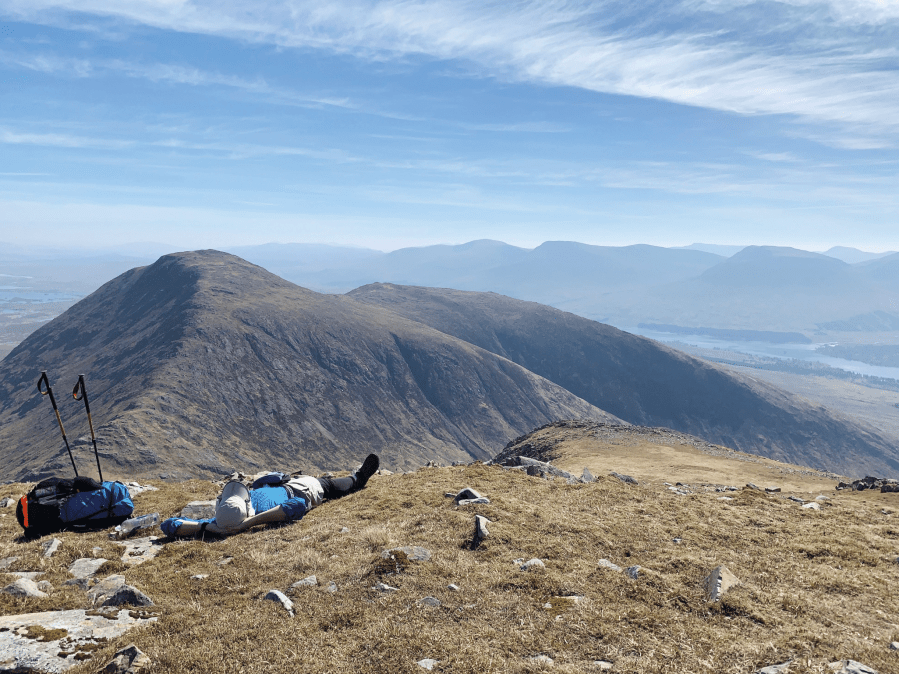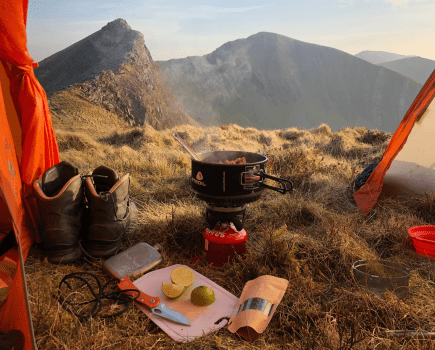Hikers’ fatigue doesn’t have to spoil your hill day, says Alex Roddie – there is a huge amount you can do to stave it off and feel fresh for as long as possible.
It’s been a long day. You started well, making good progress on the steep ascent, but you’re three peaks down and tiredness and hikers’ fatigue is dogging your heels. Everything is less fun than it was a few hours ago – less fun, you have a sneaking suspicion, than it should be.
Main image: Nothing better than a summit siesta on a hot day. Credit: Alex Roddie
Controlling fatigue means more enjoyment right now and a quicker recovery when you get back home. But it isn’t just about comfort and enjoyment. Fatigue can be a serious safety issue, potentially snowballing into exhaustion.
So, what actually causes fatigue? It’s about more than your body’s physical response to working hard. Fitness, sleep, food, hydration, sun exposure, discomfort caused by footwear, pack weight, terrain, pacing, and mindset factors can all contribute.
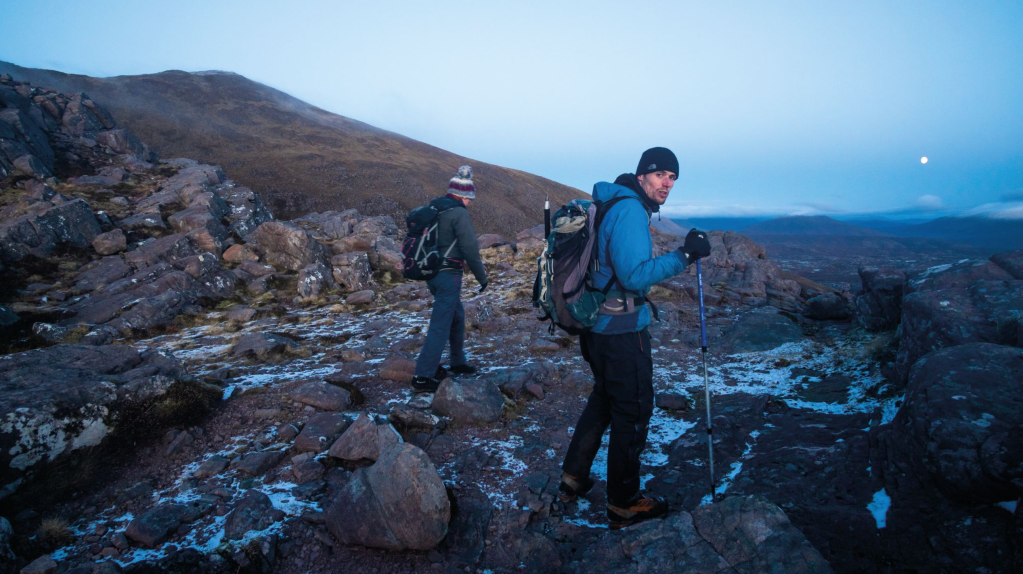
At the end of a long day out with a lengthy descent still to go. Credit: Alex Roddie
Fitness
Fitness is by far the most important factor in avoiding fatigue. In my “Life Hacks” piece about beating the winter blues (The Great Outdoors, February 2024) I wrote: “One of the best things I ever did was to begin a habit of walking five miles every weekday before breakfast.” It’s worth repeating here. Improving your physical fitness away from the mountains will yield significant benefits when you head out for your next hillwalk.
I recommend finding time for regular cardio exercise in your everyday life – preferably several hours per week. Whether it’s cycling, running, or adding a bit more walking into your schedule, you’ll begin to notice benefits.
Often overlooked is strength training. Basic exercises such as stretches, calf raises, squats, and lunges can strengthen your muscles, making them more resistant to injury and staving off lactic acid build-up. Core exercises such as planks and push-ups can help you carry a heavy pack without fatigue for longer.
Planning and preparation
A fatigue-free hill day begins the day before. When planning your route, think about the time of year, your current level of fitness and experience, and any time constraints such as the last bus home. You don’t want to feel that you have to rush.
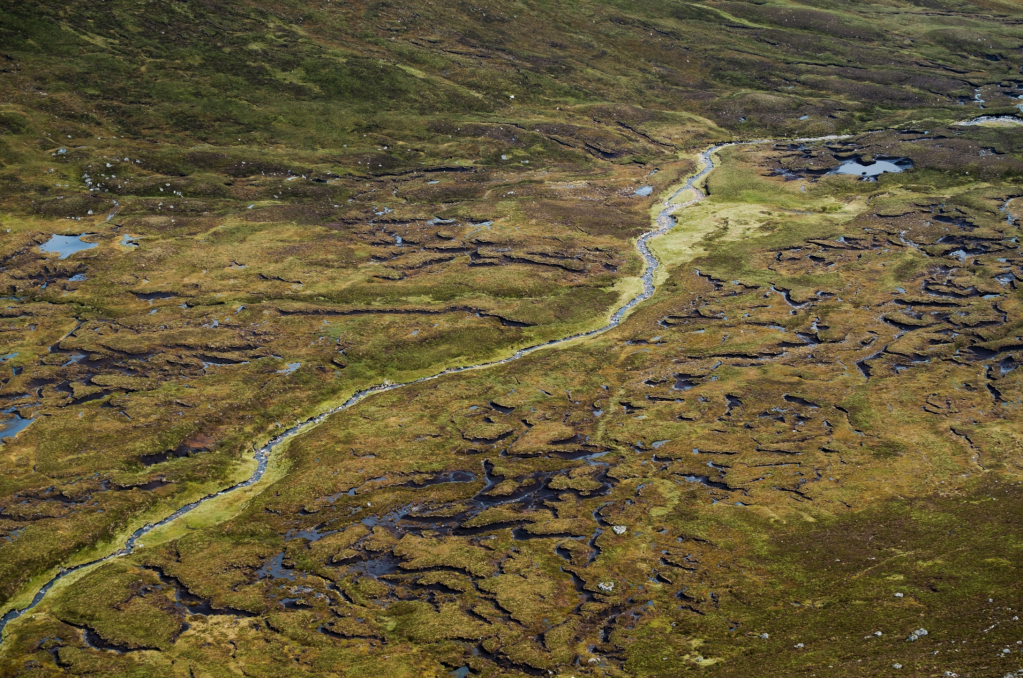
Peat hags – perhaps the most energy sapping summer terrain. Credit: Alex Roddie
Study your map; does the route mostly follow good paths, or is it an off-path bogfest with huge boulder fields? The latter will be more fatiguing than the former. And weather such as strong winds, heavy rain, or deep snow will have an impact too. Taking these factors into account, a bit more time will help you enjoy those more challenging days.
Sleep and rest
If you slept badly the night before, you might flag on the hill. Make the effort to get a good night’s sleep. Avoiding alcohol and caffeine before bed can make a surprising difference. Everyone’s different here, though, and some people can perform well on minimal sleep – often fitter walkers.
There’s no shame in taking rest stops! Make use of benches, stone shelters, and natural places to sit down. And if you are backpacking, pay special attention to your sleep duration and quality. Upgrading your sleeping bag or mat can be a game changer.
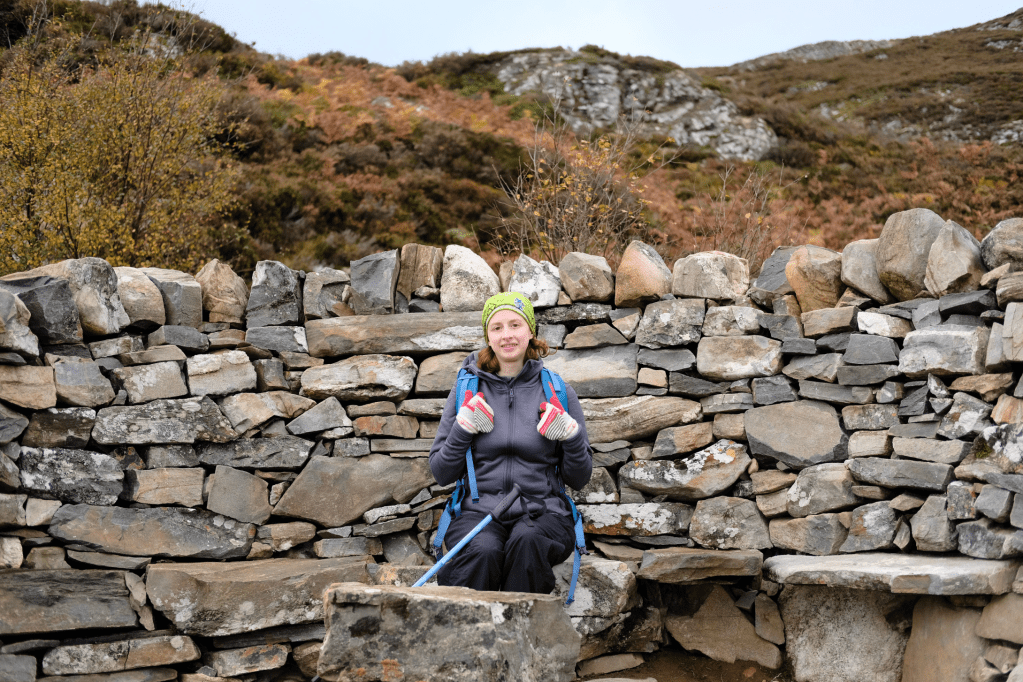
Make use of shelters you find along the way. Credit: Alex Roddie
Footwear
Pain and discomfort can lead to (or accelerate) fatigue. I used to get bad blisters until I made two changes: largely switching to lightweight flexible trail shoes in warmer weather, and moving to slightly larger footwear (I thought I was a size 10; I’m actually 10.5 or 11). Lighter shoes take less energy to walk with, and more flexible footwear can be more comfortable. An accurate fit is essential to avoid pain or blisters.
Pack weight
After you’ve taken steps to improve fitness, reducing pack weight is one of the next best things you can do to improve how you feel and avoid hikers’ fatigue. A heavier pack is more tiring to carry – it really is that simple. Carrying excess weight puts more strain on your body and can lead to knee, leg, or back pain.
There’s no need to cut the handle off your toothbrush, but thinking carefully about what you really need (without leaving essentials behind) can have a big impact, especially on multi-day walks.
Nutrition and hydration
A balanced, healthy diet will contribute to your overall fitness. Ensure you eat enough the day before your hike – carbs and fats are good here – and don’t forget nutrition on the hill. Some find that eating little and often is the key to avoid hunger (and a crash in energy levels). Look for portable, rucksack-proof, easily handled snacks such as cereal bars, trail mix, or fruit. A hit of sugar can be enough to give you a boost.
Dehydration can also be a major factor. Carry a water bottle on the hill, and keep it topped up – a filter or purifier can make mountain water safe. You will need more water in summer, but don’t overlook the importance of hydration in winter too.

In hot weather, take care to avoid sunburn and dehydration. Credit: Alex Roddie
Regulating temperature
Discomfort from being too hot or cold can lead to fatigue. Layers are your friend here – multiple thin layers make regulating temperature easier than one thick layer. In hot, sunny conditions, wear a sunhat, sun cream, and sunglasses. Avoid sunstroke and sunburn.
Pacing yourself
We all walk at different speeds – and it can be tempting to hike quickly. But be more mindful of the best pace for you. 19th-century Alpine guides used a technique called the guide’s pace, maintaining the same relatively slow plod for the entire day. The result: energy levels conserved, better performance, and reduced hikers’ fatigue. See also: Aesop’s tortoise and hare.
Mindset
Body and mind are deeply connected. There are all kinds of reasons why we might head for the hills in a negative frame of mind, and time in nature can help to right many wrongs, but a positive mental outlook can have a surprising impact on energy levels right from the start. Seeing the challenges of your day as an integral part of the experience, rather than stresses that annoy us, can also help.
I always feel more tired when motivation is flagging. Hiking with a friend can make a dramatic difference as there is always someone else to buoy you up or share in worries.
Getting older
It’s an unfortunate fact that, all else being equal, older hikers are more likely to experience hikers’ fatigue than younger ones. However, fitness is the great leveller – and an older walker who keeps fit and uses their experience wisely might feel a lot better at the end of the day than an unfit younger companion.
As you get older, pay attention to what your body is telling you, make allowances for new health factors, and consider going a bit easier on yourself than you did in your twenties. But remember the importance of mindset and motivation – and keep challenging yourself in the hills.
Read more: How many calories do I need in backpacking meals?

